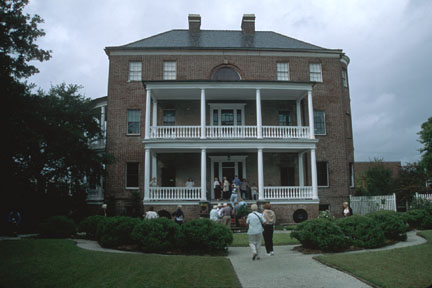

The Manigault House, built in 1803,is owned by the Charleston Museum. We got a tour of the inside, which is completely decorated in period furniture. Many Noisette and Tea-noisette roses are planted in the front yard (the opposite side of the house from this picture.)

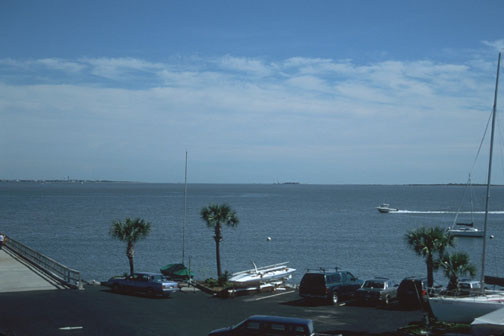
This picture was taken from the balcony of the Yacht Club after a delicious lunch there. The small island in the middle of the horizon is Fort Sumter.


This is a typically narrow brick street in a very old residential neighborhood.


Another very old street. Notice how every window has working shutters. Where I grew up in New Jersey, many houses had shutters, but they were just decorative. Here, where hurricanes are serious, all the shutters are in good working order.

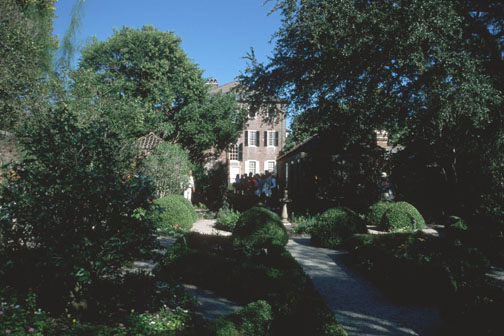
This is the backyard of the Heyward-Washington House, a well preserved landmark ca. 1772, including several original outbuildings such as the kitchen. Heyward was a signer of the Constitution. In 1791, Washington slept here.

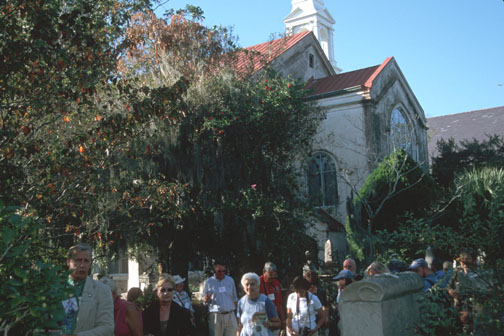
A plant of Louis-Philippe, a China rose seen all over Charleston, is climbing up a tree by the Unitarian Church. John Meffert is the man in the lower left of the picture. You can tell who the conference attendees were, because we had big white nametags which were worn like necklaces.

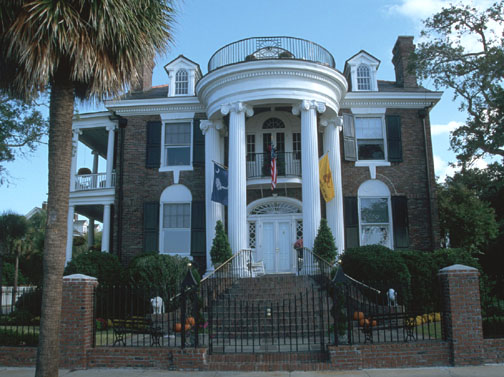
This home is owned by the owner of the Piggly-Wiggly Markets. Notice the pigs at the base of the steps. The reason there are so many steps to the first floor is that this neighborhood is only about a foot above sea level, and the sea (the river, actually, since the sea doesn't start till the far side of Fort Sumter) is about four feet behind where I stood to take this picture.

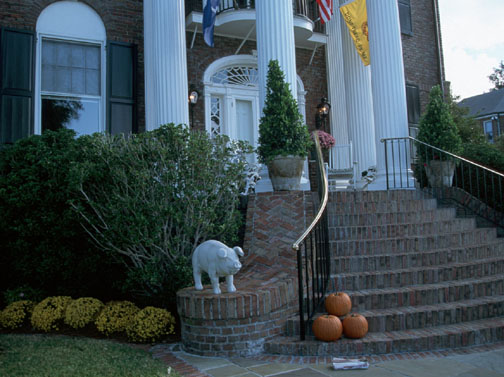
Close up of left piggly. Our tour guide said they are often seen donning appropriate attire on holidays.

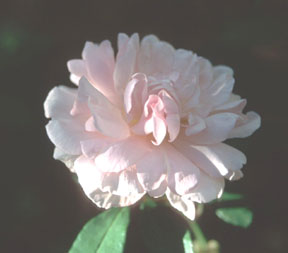
'Spice', a rose found in Bermuda, now growing in a garden in Charleston. Some people this this may be Hume's Blush. Others are pretty sure it's not.

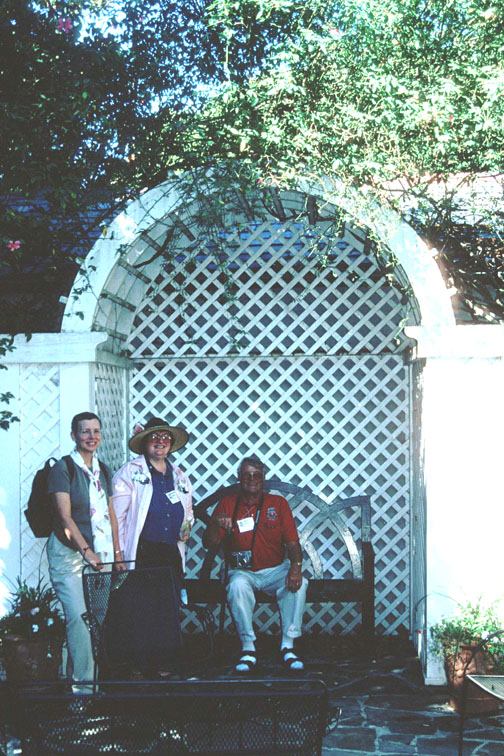
Phyllis McLaughlin, Margaret Rose, and Mel Hulse in a Charleston garden.
I was crazy about these single Houses. They are only found in Charleston. They're called "single" because they are only one room wide, so that summer breezes could flow through all the rooms. Most are oriented with the porch on the south side for shade from the summer sun, and that's where the breezes come from. The porch is called a "piazza" and has a wall on the street end, with a doorway looking like the front door of any house, but of course it leads you to the piazza, not into the house. They date from the 1800s and are found in most neighborhoods, ranging from plain to fancy, and well- restored to derelict.


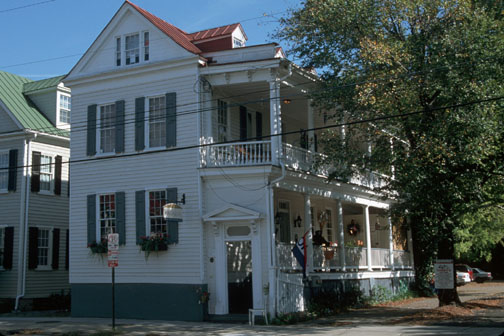
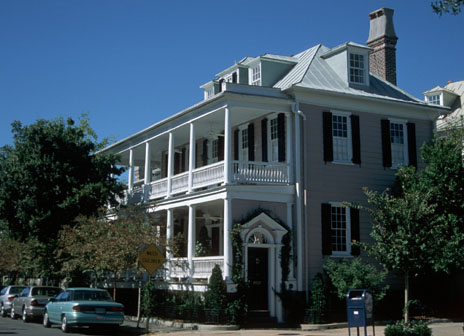

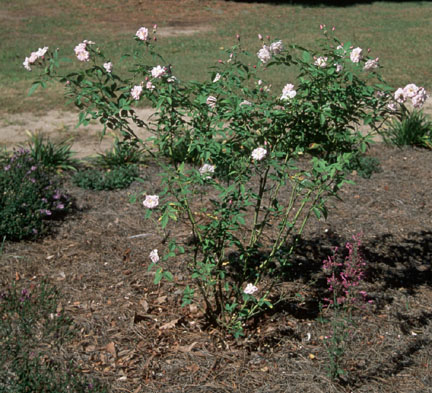 Champney's Pink Cluster in the Noisette study garden.
Champney's Pink Cluster in the Noisette study garden.

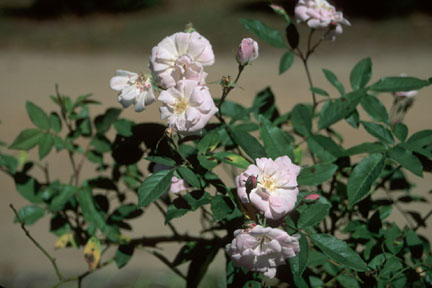
A close-up of Champney's

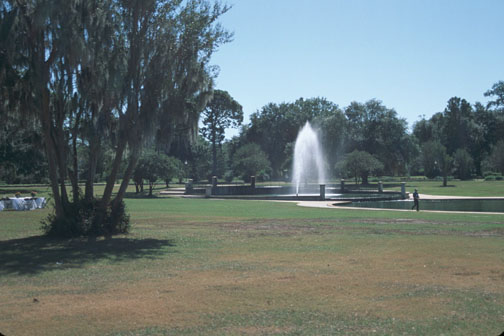
Hampton Park. The table's where we had lunch are in the left center of the photo. The Noisette study garden borders the grassy area.

 We called this "pleated corn" but nobody could tell me what it is, other than being a fancy member of the grass family.
We called this "pleated corn" but nobody could tell me what it is, other than being a fancy member of the grass family.

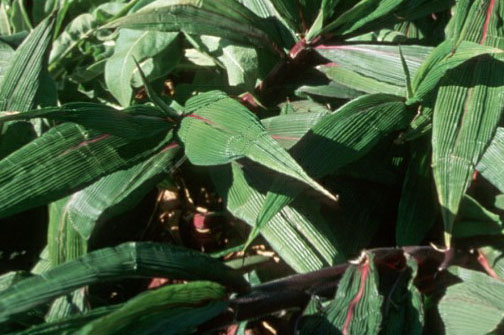
A close-up of the pleating in the leaves. If you know what this is, please email me.


This is another thing I fell in love with in Charleston. Some descendants of the slaves here still weave baskets as their ancestors did, using sweetgrass, bullrush, pine needles and palmetto. They sell them on the streets and in the market in downtown Charleston, at the farmer's market on Sunday mornings, at some tourist locations, and along the highway through Mt. Pleasant. There is even a Historical marker on the highway telling the history of sweetgrass basket making. I bought several small ones, because I couldn't afford larger ones. The large baskets in this photo are in a display case at the airport. Sorry it's blurry, but I couldn't use flash because it would reflect, so this was a long hand-held exposure.